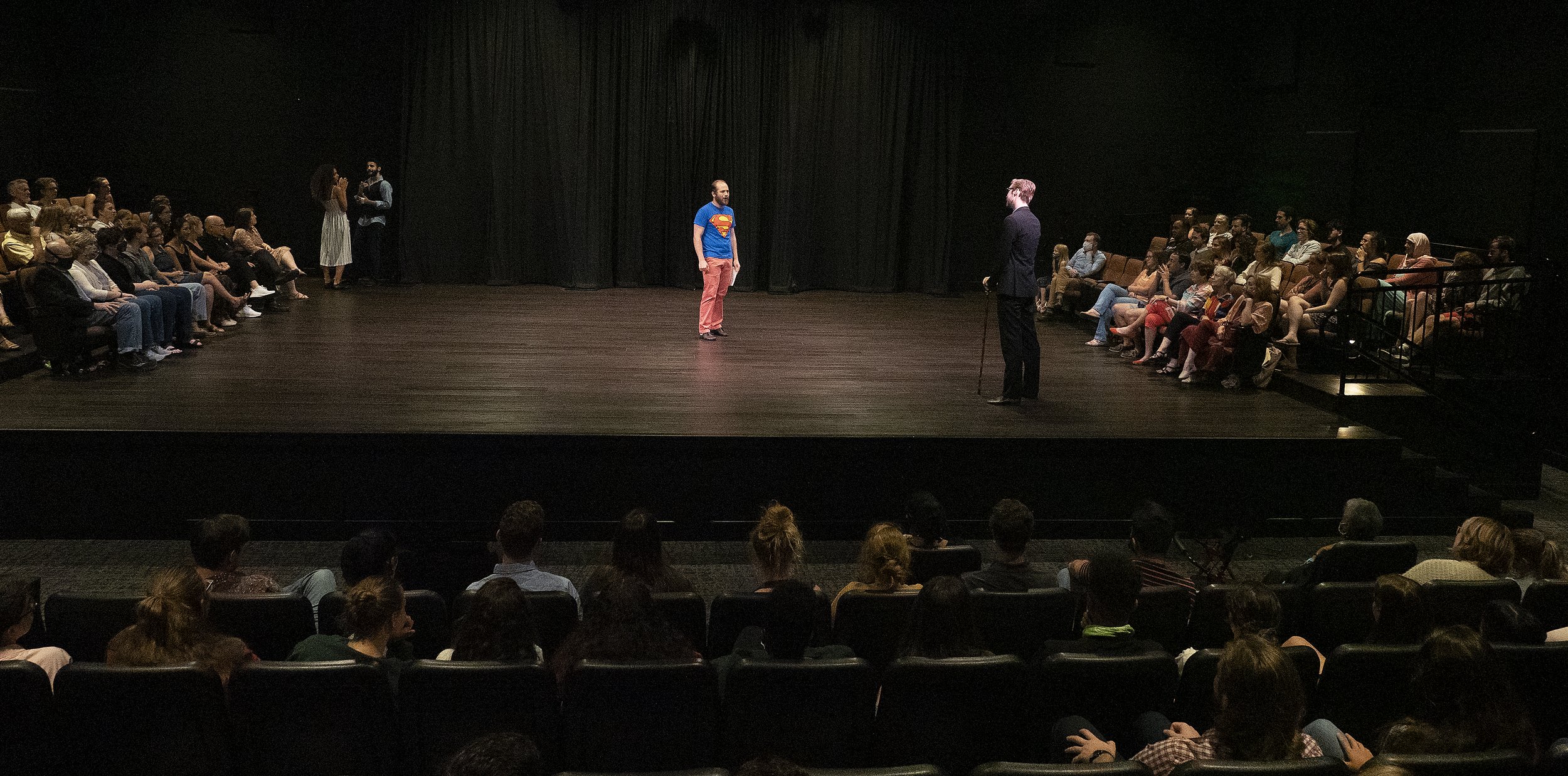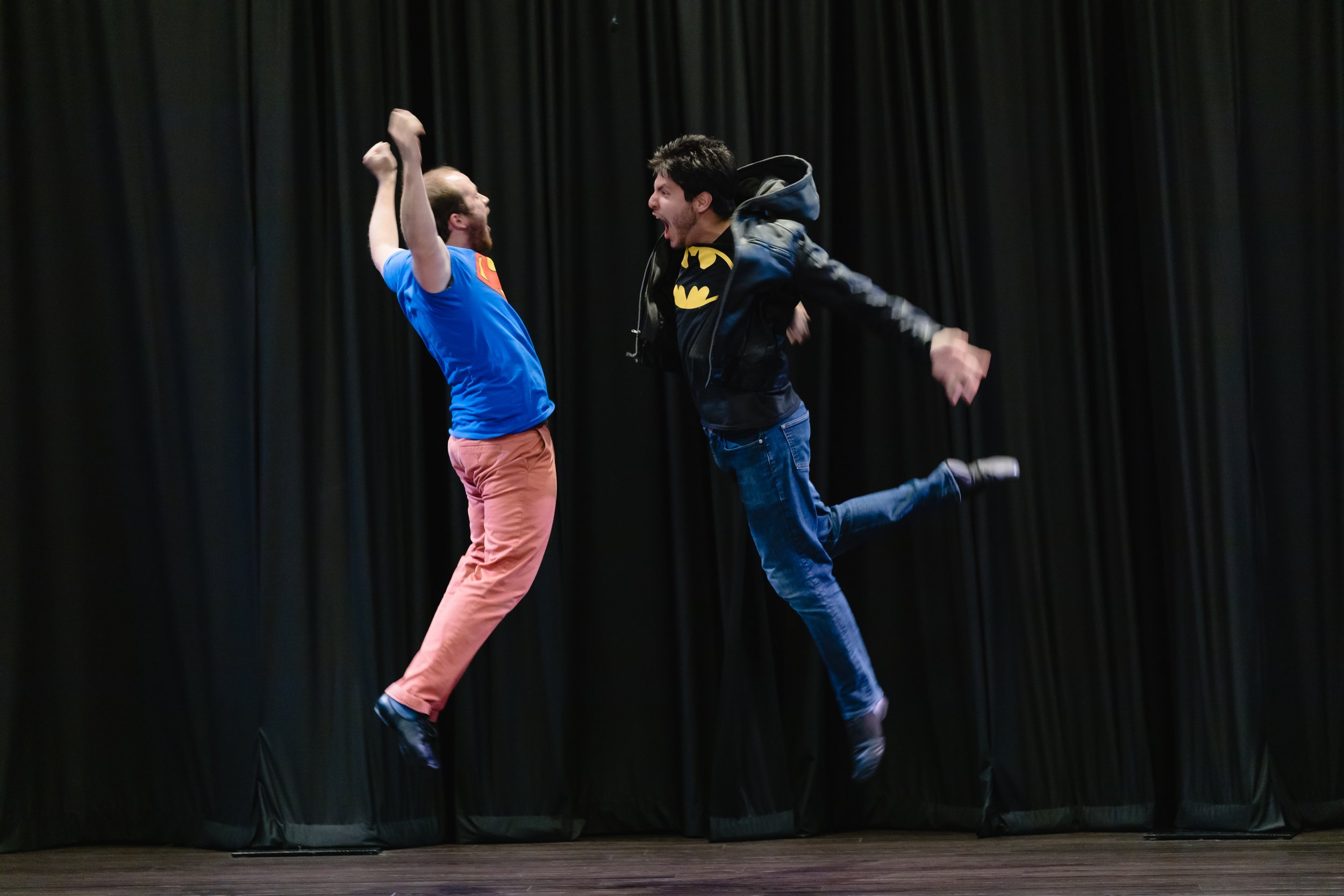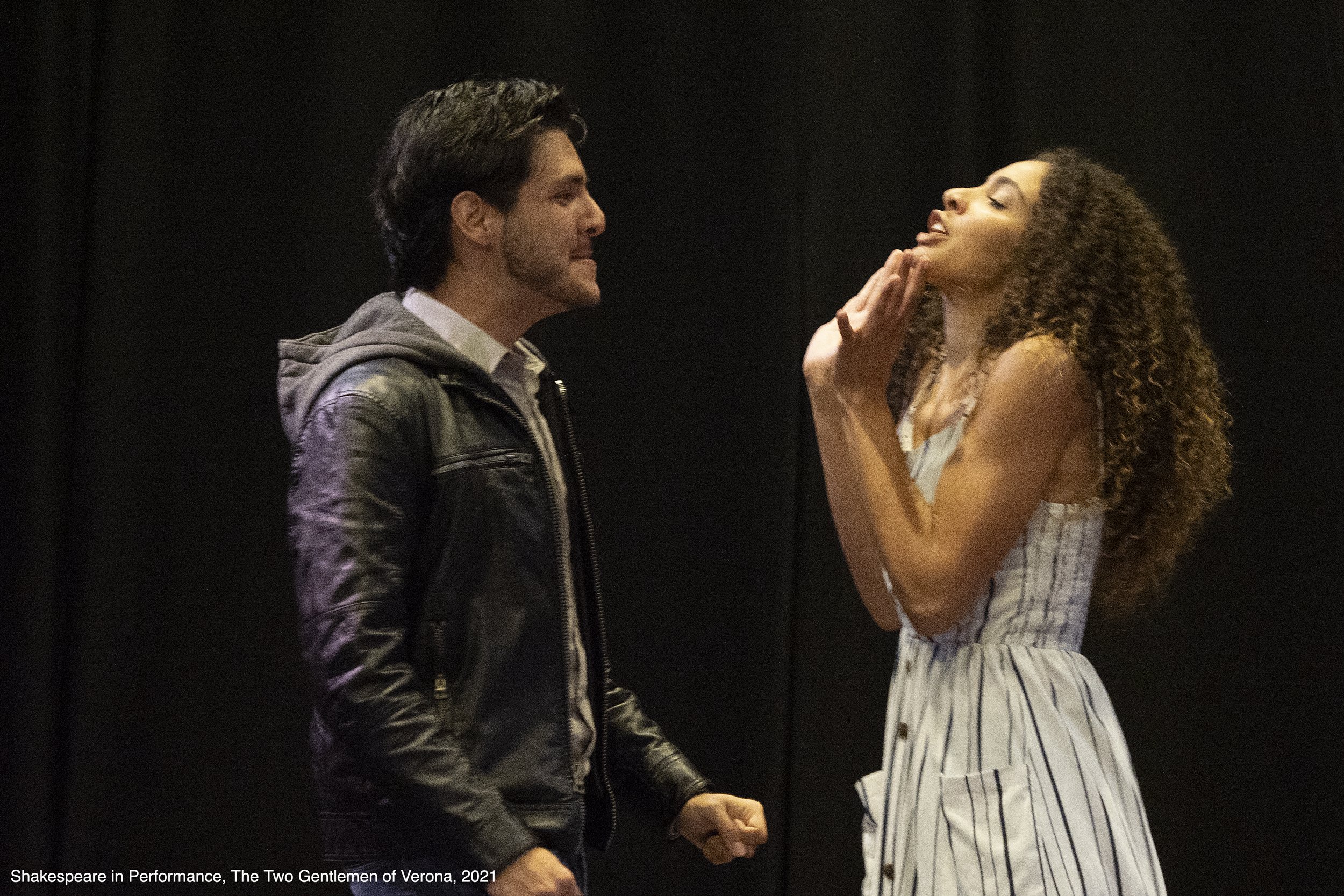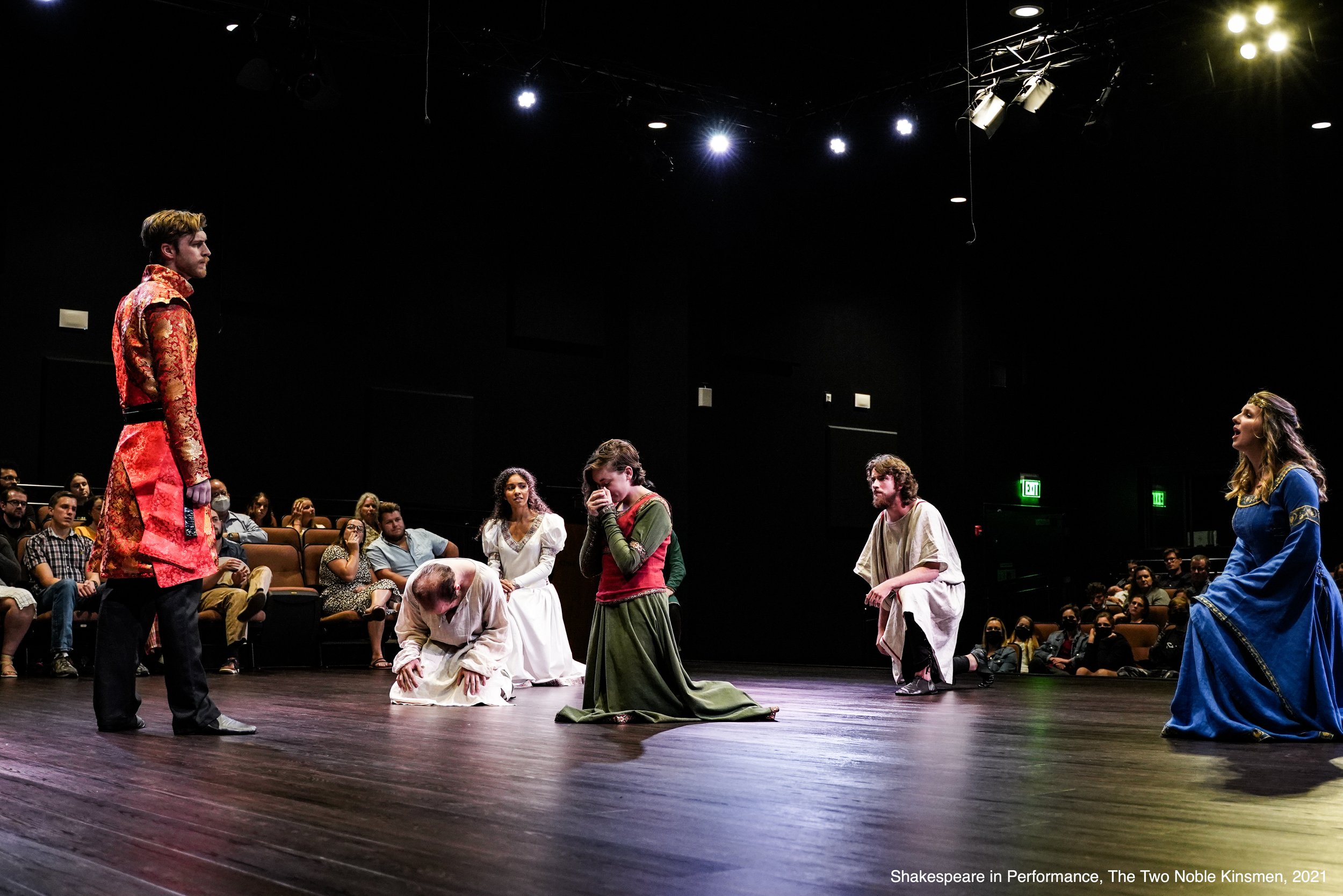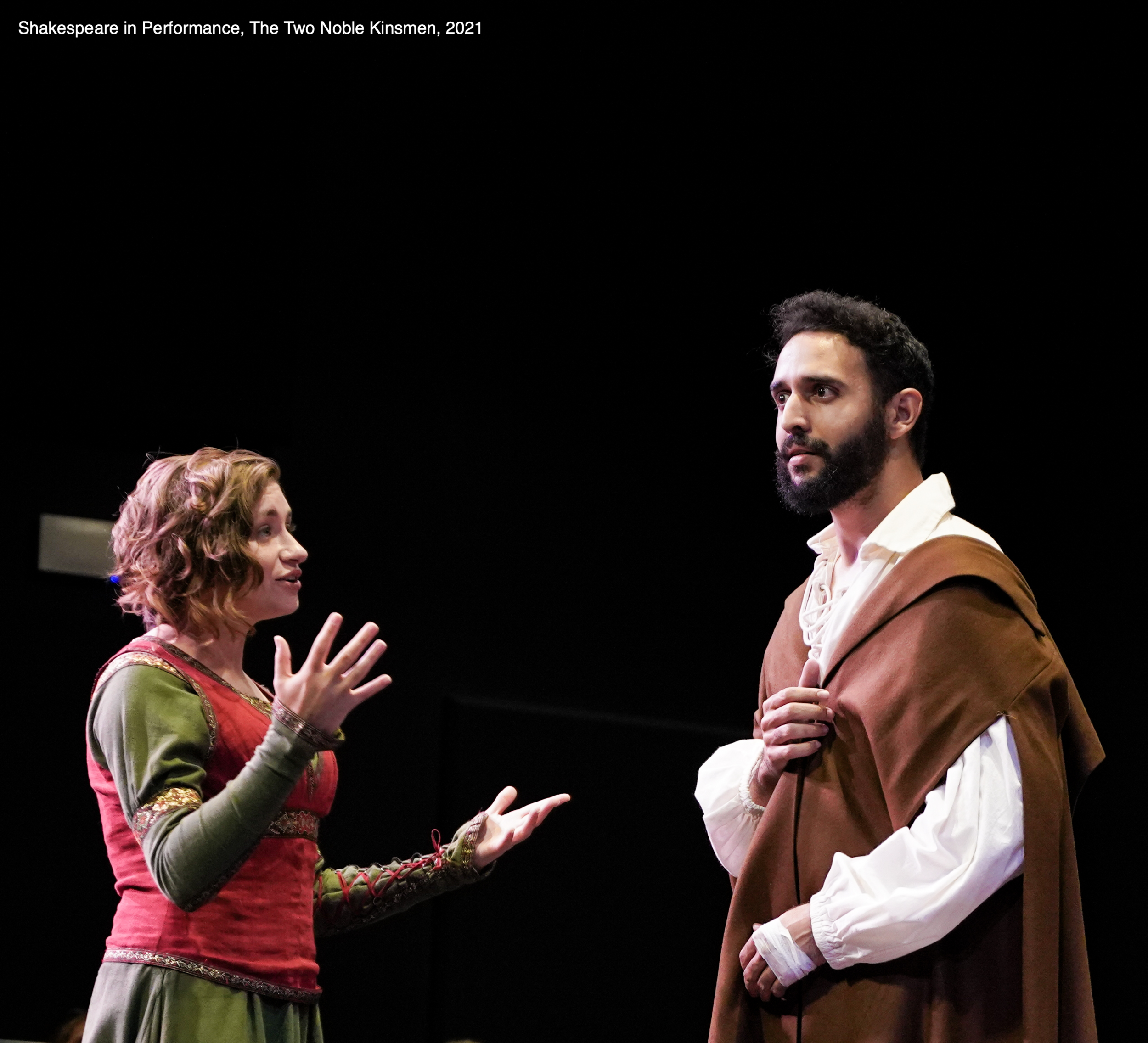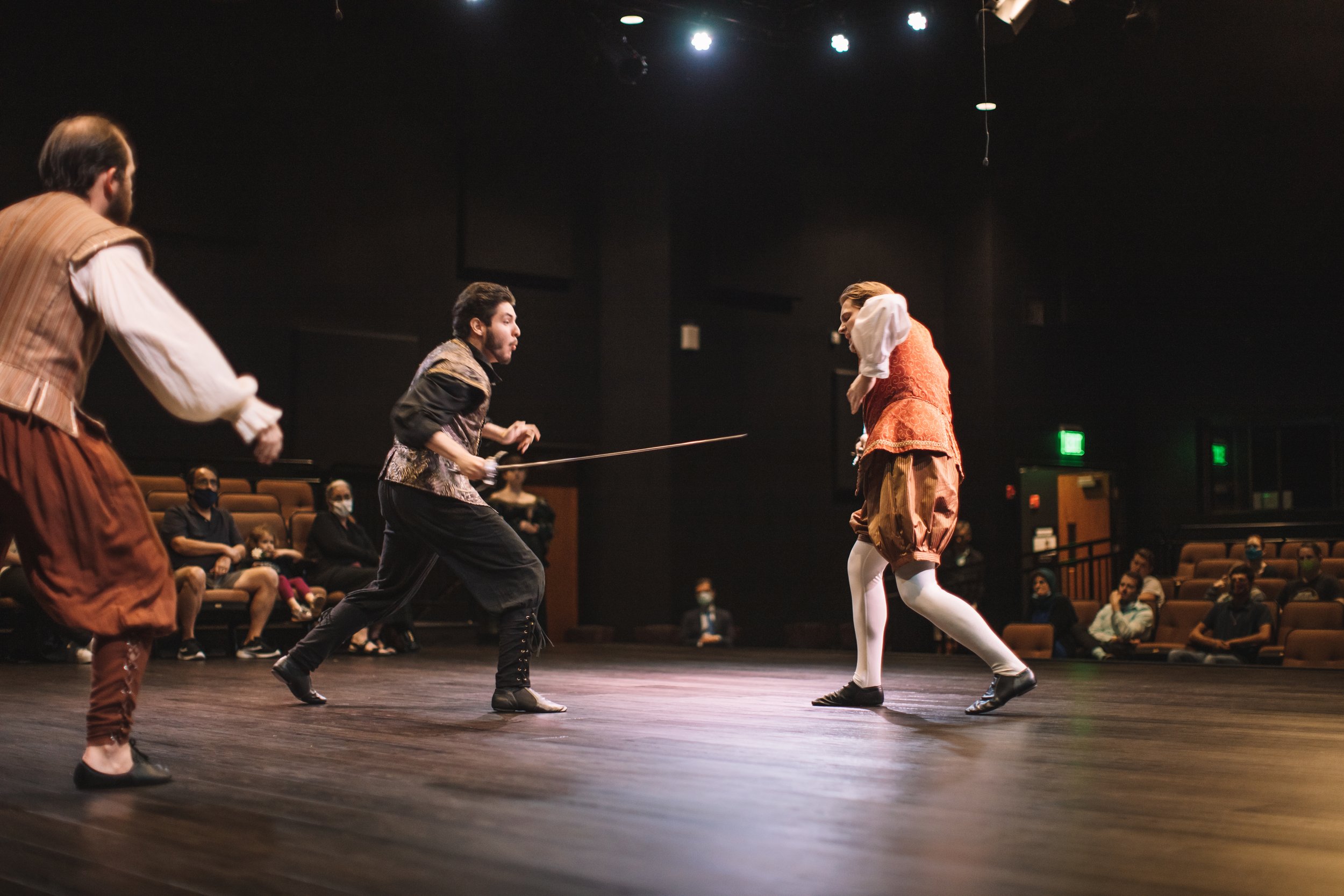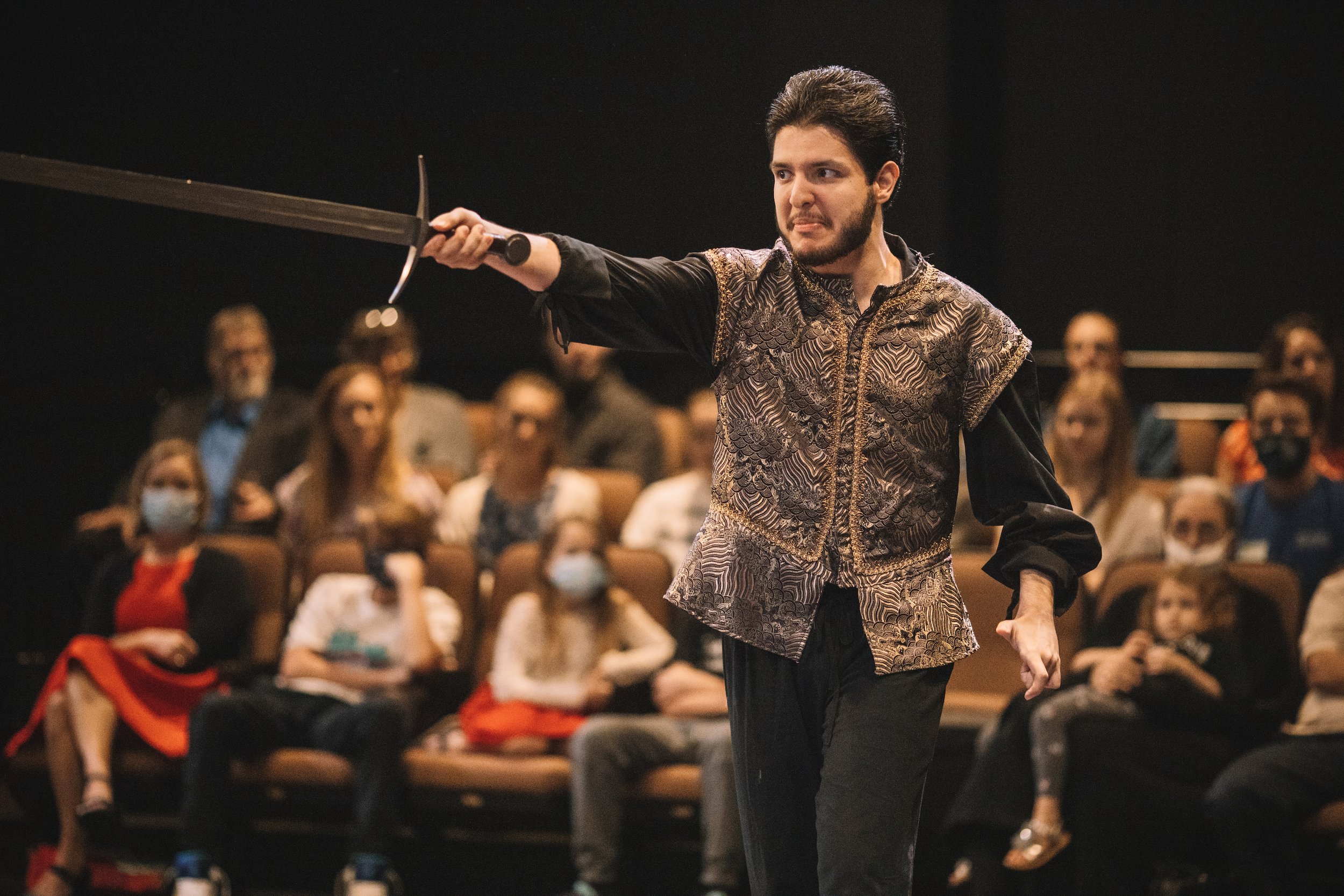shakespeare ANYWHERE
Travis Curtright, PhD, or “Dr. C,” first offered instruction in Shakespeare in Performance (SIP) in 2012. He directed students in any available space. To turn a classroom into a stage, students would hang a curtain across a wall, take all the tables out of the room, and push the chairs up against the remaining three walls.
Travis Curtright directs Paula Shute in A Midsummer Night’s Dream.
WhY a black box theater?
Though SIP productions are designed to be played in any space, Dr. C prefers a Black Box theater with a thrust stage. These spaces are painted black in order to focus attention on the actors, who create a sense of place and setting through their voices and movement. There are no sets and props are used sparingly. Click through the gallery below to see production photos.
Black Box productions on a thrust stage cultivate a theater of encounter, which includes:
Multiple sight lines: Scenes are played upon and prepared for performance on a thrust stage, where audiences sit on three sides of the stage, surrounding the actors. Audiences can observe and process stage action from multiple vantage points, depending upon whether they sit on stage or off, center stage or stage left, even within each of those sections. In effect, “stage pictures” become highly diverse in this thrust stage configuration, and actors learn how to adjust and move in this framework.
Universal lighting: The house lights are dimmed but remain on. There are no spotlights, footlights, or other conventional uses of theatrical lighting. The actors’ voices and movement provide the points of focus and changes in sight lines. Audience members cannot hide in the dark either. Every seating section allows an audience member to see the stage and other seating sections. As a result, audience responses to the play become part of the way others watch the show.
Leaving the stage bare: Plays are presented without sets, scenery, individual microphones or headsets. The actor’s natural voice and movement is privileged and foregrounded in this setting.
Breaking the fourth wall: Actors directly address audience members. This practice is less of an exercise in breaking the fiction and more of a deeper immersion into it. Monologues or soliloquies are not an individual character’s thoughts that an audience overhears, but a confession to or conference between audiences and the character speaking.
The removal of boundaries between actors and audiences helps us to encounter these plays anew.



